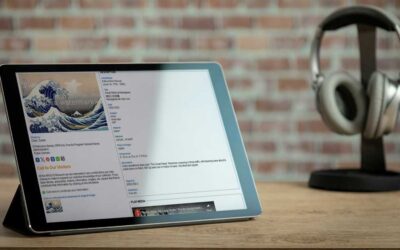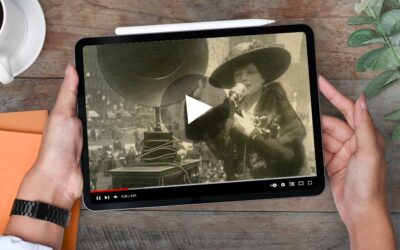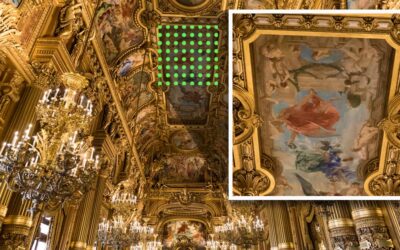Part 2: Create a Museum Digital Project Workflow that Works

Rachael Cristine Woody
Whether initiated by or delegated to the museum collection staff, it’s up to the staff to figure out how the museum digital project should proceed and what the workflow needs to look like.
In order to determine workflow, project activities need to be defined, standards and specifications considered, and resources identified. Part 2 of this series will walk you through prompts to consider as you create your museum digital project workflow.
Outline Digital Project Activities to be Undertaken
Based on the goals of the project, what project activities need to happen in order to reach those goals? Is there an order in which they need to occur? These are the usual activities you can build off:
- Preparation (for the object, such as pulling, setting up, cleaning, or restoration)
- Digitize the object
- File management (file naming and surrogate master and work file creation)
- Research the object for description creation
- Catalog the object with consistent metadata and descriptive standards usage
- Review and publish the digital surrogate with related catalog record online
Establish Digital Project Standards and Specifications
Depending upon the project goal and previously established museum best practices, there will need to be a review, adjustment, and articulation of the standards and specifications project activities will need to adhere to. I recommend considering the following items:
- Scanning equipment to use
- Resolution required
- Output file type
- File naming convention
- Where to store digital files
- Digital folder hierarchy
- Digital asset backup or other preservation mechanisms
- Metadata to include
To read more on museum digital project standard and specifications, please see Museum Digital Project Specifications post on the Lucidea’s Think Clearly Blog.
Identify Resources (Equipment, Software, Personnel) Needed
Finally, the last workflow element you need to consider is a list of resources needed to get the job done. With the “Why?” of the project known, and the scope, objects involved, activities to perform, and standards to follow identified—you now have all the information you need to select the resources that will best support your workflow. Consider the following:
- The work space, equipment, and software present.
- The digitization equipment needed based on the items being digitized.
- The personnel with the right level of knowledge and experience to execute the project successfully.
To read more on museum digital project equipment, software, and personnel needs, please see Considering Museum Digitization Tools by Item Type and How to Choose the Right Tools for Museum Digital Projects post on the Lucidea’s Think Clearly Blog.
Construct the Workflow
Now that all project workflow elements have been defined, you’re ready to construct the project workflow. For museum digital projects, the workflow will include the activities you’ve already identified, which again are:
- Preparation (for the object, such as pulling, setting up, cleaning, or restoration)
- Digitize the object
- File management (file naming and surrogate master and work file creation)
- Research the object for description creation
- Catalog the object with consistent metadata and descriptive standards usage
- Review and publish the digital surrogate with related catalog record online
Workflow Timing
The next step is to time the current workflow and make sure you’ve accounted for all project elements accurately.
Preparation + Digitization + File Management + Research + Catalog + Review and Publish = Time spent per object
15m (object preparation) + 3m (digitization) + 2m (file management) + 20m (research) + 15m (cataloging) + 5m (review and publish) = 60m per object
Next, take the total number of objects x Time spent per object (above equation total) = Total time for project
Total number of objects for the project = 1000 x 60m per object = 60,000m or 1,000 project hours
To read more on how to construct a museum digital project workflow equation, please see How to Construct a Museum Digitization Equation post on the Lucidea’s Think Clearly Blog.
Workflow Testing, Refinement, and Flexibility
In order to achieve an accurate account of workflow timing, I recommend performing a few run throughs with different objects, equipment, personnel, etc. These tests will provide a more accurate sense of timing. These are your variables. And remember, nothing ever goes according to plan 100% of the time. When you craft your estimate make sure to add time in for digitization equipment and software set up, technical trouble-shooting, and the inevitable project delays. As you create your workflow, take a moment to think through and include the following:
- Time for equipment ordering and delivery, hardware and software setup, trouble shooting, and training.
- There will also be delays, big and small. Like a global pandemic. As you run through workflow creation it’s worth considering worst-case scenarios and build in a buffer for project delays. Flexibility and remaining agile is key to maintaining control of a project.
Conclusion
We will wrap up Create a Museum Digital Project Workflow that Works with Part 3, where I’ll share my advice for how to create a fool-proof workflow so that each museum digital project you take on is a successful one.
Interested in reading part 1? click here

Rachael Cristine Woody
Expert Rachael Cristine Woody advises on museum strategies, collections management, and grant writing for a wide variety of clients. In addition to several titles published by Lucidea Press, Ms. Woody is a regular contributor to the Think Clearly blog and a popular presenter. Register here for her upcoming webinar, “Create a Museum Digital Project Workflow that Works” on December 15, 2021. And learn about Lucidea’s Argus solution for powerful and innovative museum collections management.
Never miss another post. Subscribe today!
Similar Posts
The CMS Digital Exhibit and Story Pathways
Digital exhibits provide powerful ways to engage audiences, but choosing the right story pathway is key. Explore how different exhibit structures—linear vs. multi-pathway—shape the visitor journey.
Captivating Story Delivery with a Multimedia Player
Explore how museums can enhance storytelling with multimedia players, using audio-visual materials and archival content to create engaging digital narratives.
How to Use Slideshows and Flipbooks to Offer Engaging Museum Story Visuals
Museums thrive on storytelling, and the right digital tools can make all the difference. Slideshows and flipbooks offer an engaging way to showcase collections, drawing visitors in with dynamic visuals and interactive elements.
Zooming Into Story Details:
How Museums Can Enhance Storytelling with Visual Tools
Visual tools such as zoom are crowd pleasers when presenting visual content online, allowing museums to create immersive and engaging digital experiences.




Leave a Comment
Comments are reviewed and must adhere to our comments policy.
0 Comments